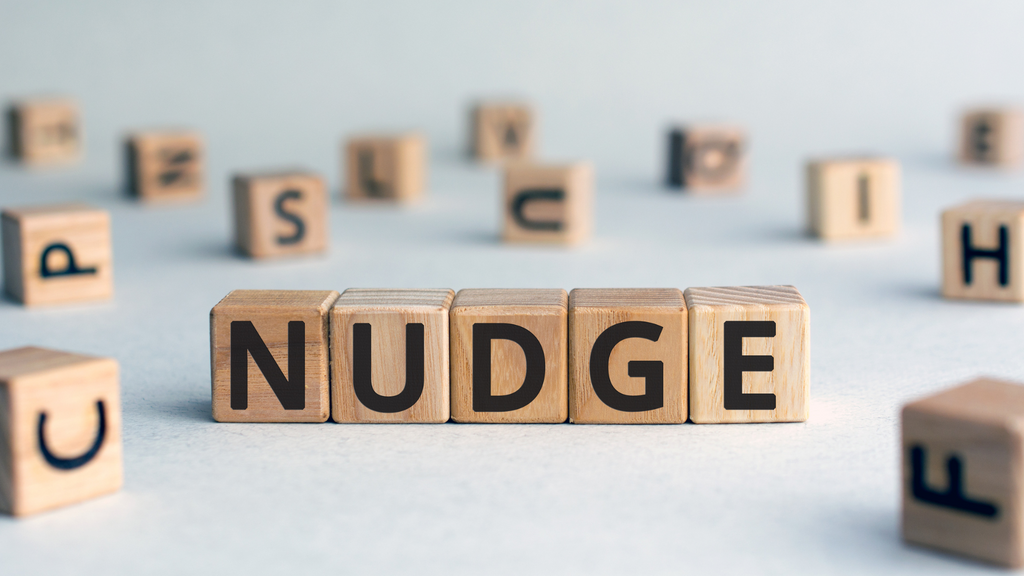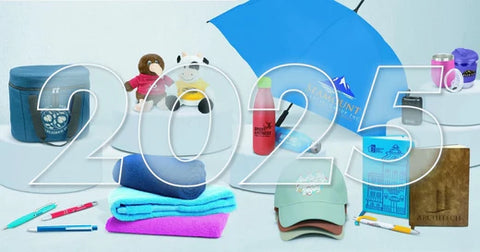Blog / Sales & Marketing / Nudge Theory : How Businesses Can Use Psychology to Influence Customer Behavior
Nudge Theory : How Businesses Can Use Psychology to Influence Customer Behavior

Have you ever entered a grocery store with a strict grocery list, only to find yourself at the checkout with a basket overflowing with tempting extras?
Or perhaps you browsed an online store, mesmerized by strategically placed "limited-time offers" and disappearing progress bars that instilled a sense of urgency.
If this sounds familiar, you've likely encountered the subtle persuasion of nudge theory in action.
Nudge theory, pioneered by Nobel laureate Richard Thaler and Cass Sunstein, explores how seemingly insignificant changes in presentation and environment can significantly influence human decision-making.
It's not about forceful manipulation or subliminal messaging; rather, nudge theory utilizes our inherent cognitive biases and mental shortcuts to gently steer customers towards desired behaviors.
For businesses, this translates to increased sales, improved customer engagement, and ultimately, a more profitable bottom line.
Let's delve deeper into how businesses can leverage nudge theory to positively influence customer behavior:
The Power of Defaults
People often exhibit a phenomenon known as the "default bias" meaning they tend to stick with the pre-selected option, whether it's opting into a loyalty program during checkout or choosing a higher subscription tier with more features. Businesses can leverage this by making the desired action the default choice.
For instance, a study by David Webb, a marketing professor at Wharton School of the University of Pennsylvania, found that pre-selecting the "add gift wrapping" option at checkout increased the adoption rate by a staggering 73%. Similarly, streaming services like Netflix often pre-select the "continue watching" option after an episode ends, subtly nudging users to binge-watch another episode.
A subscription service like Dollar Shave Club offers a free trial as the default option when signing up. This "low-risk" nudge encourages customers to try the service without feeling a significant upfront commitment. Should they enjoy the product, they're more likely to continue with a paid subscription.
Harnessing Social Proof
Humans are inherently social creatures, heavily influenced by the actions and opinions of others. Businesses can utilize this principle of social proof to build trust and encourage desired behaviors. Highlighting positive customer reviews, showcasing popular products through "best sellers" badges, or displaying "low stock" warnings can trigger a sense of urgency or fear of missing out (FOMO), prompting customers to act. A study by Influence at Work found that 84% of consumers trust online reviews written by strangers as much as personal recommendations.
Amazon strategically displays "frequently bought together" recommendations alongside product pages. This leverages the social proof effect by suggesting complementary items that other customers have purchased alongside the product being viewed. This nudges customers to consider additional purchases and increases average order value.
Playing with Perception
The way information is presented can dramatically impact how customers perceive value and make decisions. Businesses can utilize this concept of "framing" to influence customer behavior. For instance, highlighting a discount as "you save X%" rather than simply stating the "discounted price" emphasizes the value gained from the purchase. Similarly, showcasing the limited availability of an item through countdown timers or "limited quantity remaining" notices can create a sense of scarcity, encouraging customers to complete the purchase before the opportunity disappears.
Airlines often leverage framing by presenting different fare options. A more expensive "business class" option might be positioned next to a "basic economy" fare lacking amenities like seat selection or checked baggage. This framing strategy makes business class appear more appealing despite the higher price tag.
The Power of First Impressions
Our brains rely on "anchors" - the initial piece of information encountered - to make subsequent decisions. Businesses can utilize this anchoring effect to influence customer perceptions of value. For instance, showcasing a higher-priced product first acts as an anchor. This makes a seemingly similar but lower-priced option appear more attractive in comparison. A study published in the Journal of Marketing Research found that presenting a decoy option (a clearly inferior product) can increase sales of the intended product by as much as 12%.
Many high-end clothing stores employ the anchoring effect. By displaying expensive designer items throughout the store, a mid-range item priced slightly lower appears more affordable in comparison. This nudges customers towards purchasing the mid-range option, even though it might have a higher price point than they originally intended.
The Power of Positive Reinforcement: Rewarding Desired Behaviors
Positive reinforcement, a cornerstone of operant conditioning, is a powerful tool for influencing behavior. Businesses can leverage this principle by implementing loyalty programs, gamification elements like points and badges, or personalized discounts to encourage repeat business and increase customer engagement. Studies by Maritz Loyalty show that loyal customers are more likely to recommend a brand to others and spend 23% more per transaction compared to non-loyal customers.
Many coffee shops employ a loyalty program where customers earn points with each purchase. These points can be redeemed for free drinks or other rewards. This system incentivizes customers to return frequently and increase their overall spend. Additionally, mobile apps like Starbucks leverage gamification elements like achievement badges and personalized challenges to keep customers engaged and motivated to return.
Ethical Considerations: Nudging with Transparency
While nudge theory offers a powerful toolkit for influencing customer behavior, it's crucial to emphasize ethical implementation. Transparency and customer empowerment are paramount. Nudges should guide customers towards informed decisions, not manipulate them. Businesses must avoid deceptive tactics like hiding important information or creating a false sense of urgency through exaggerated scarcity.
Here are some key principles for ethical nudging:
- Transparency: Customers should understand how nudges are being used and have the freedom to make independent choices.
- Honesty: Information presented should be accurate and avoid misleading customers.
- Fairness: Nudges should benefit both businesses and customers, avoiding exploitative practices.
By adhering to these principles, businesses can leverage nudge theory to create a win-win situation. Customers benefit from convenient options and tailored experiences, while businesses enjoy increased sales and customer loyalty.
The Future of Nudges: A Personalized Approach
As technology evolves, so does the potential for personalized nudges. Businesses can leverage data analytics to understand individual customer preferences and tailor nudges accordingly. This can include personalized product recommendations, dynamic pricing strategies, or targeted promotions based on past purchase history.
Nudge theory, when thoughtfully applied, represents a powerful tool for businesses to influence customer behavior in a positive and ethical manner. By understanding the underlying psychology and implementing nudges transparently, businesses can foster stronger customer relationships and drive sustainable growth in the long run.







